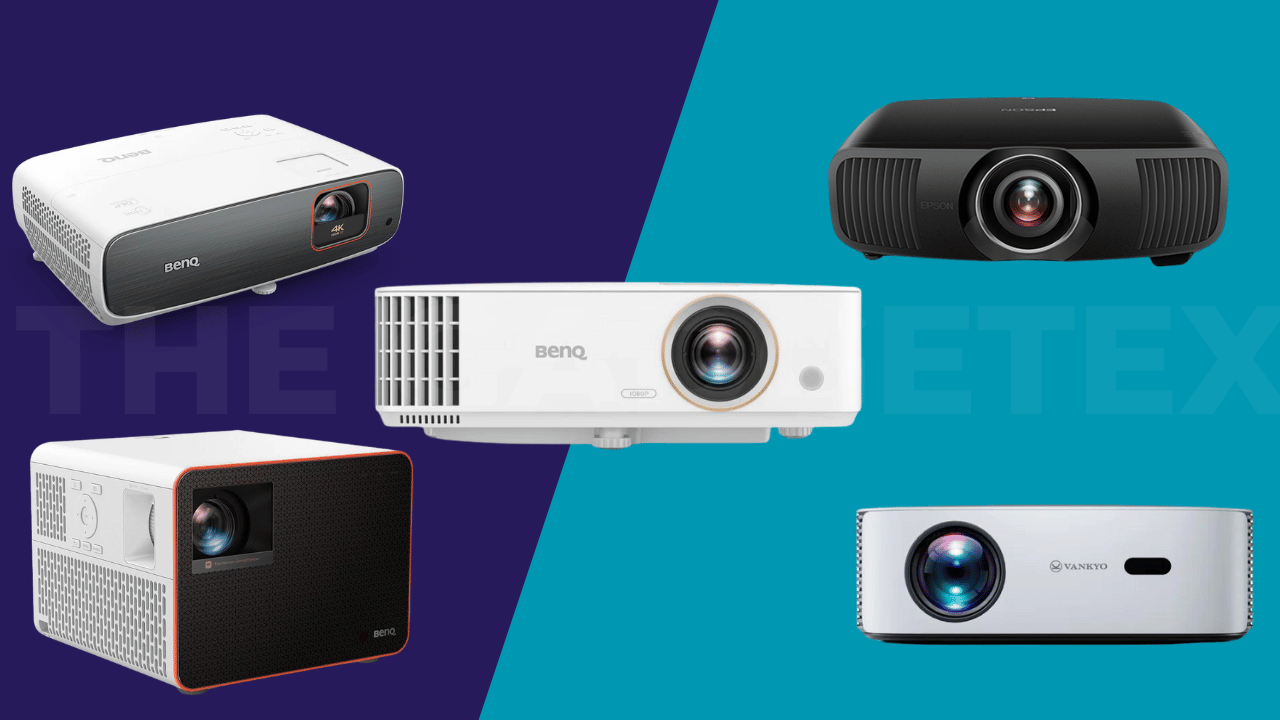In the past, projectors could be used for anything from corporate presentations to home cinema setups, and the most practical way to group them was according to their weight class. However, those days are long gone. These days, you may categorize them into a plethora of useful fields, such as image technology (LCD, DLP, LCOS, and even laser raster), light source (lamp, LED, laser, or hybrid), and—above all—purpose.
Projectors have gotten more specialized as well as more frequently utilized. For example, a model meant for viewing movies in a dark room doesn’t require the same amount of contrast or color accuracy as one meant for displaying corporate presentations in well-lit areas.
First, we’ll go over our top choices—made from proven models—for a range of purposes in this guide. We’ll also discuss our selection of each for that particular application. Next, we’ll walk you through the things to look for in a projector so you can be sure you get the greatest fit for whatever you want to use it for.
Design
Product
Features
Price
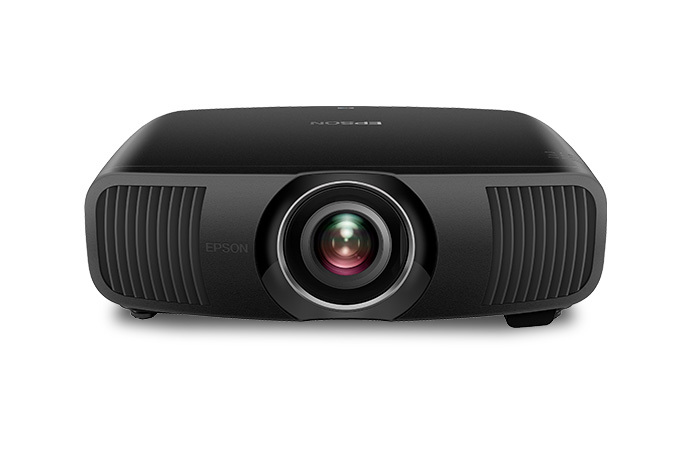
EPSON PRO CINEMA LS12000 4K PRO-UHD
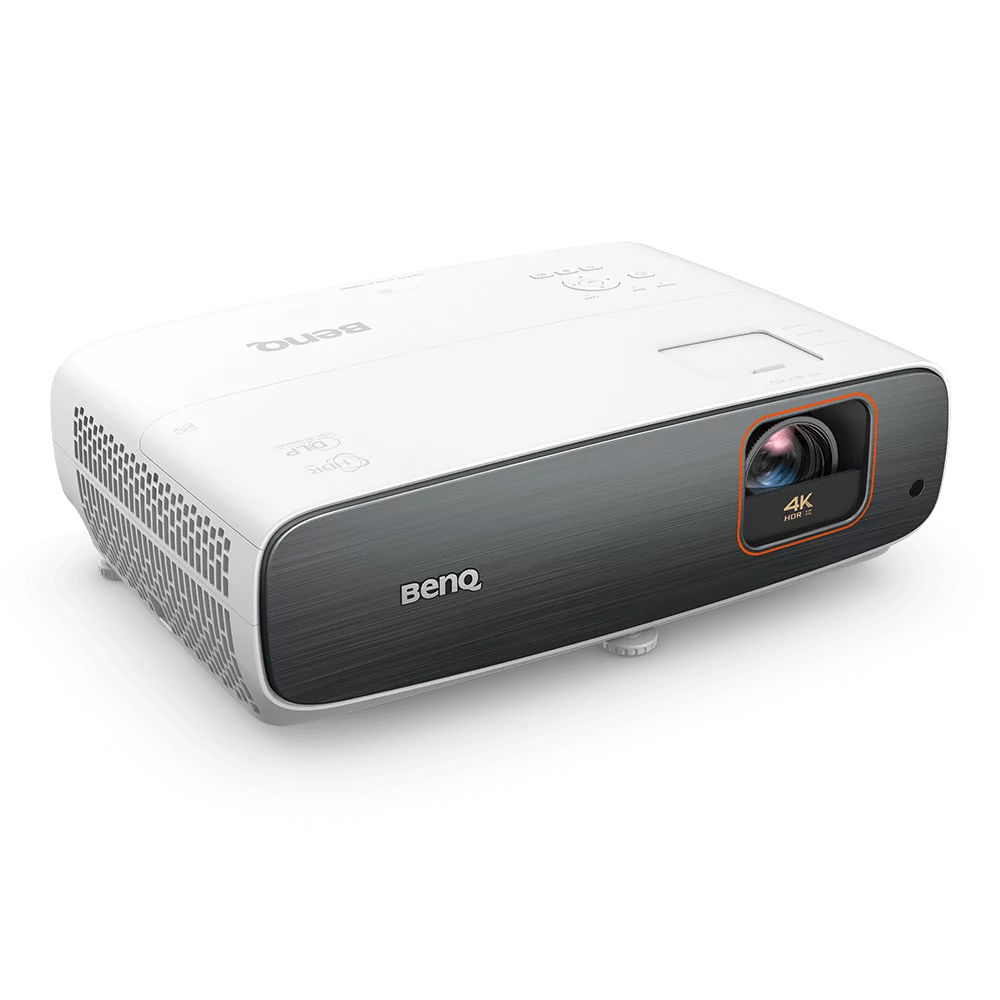
BENQ TK860I
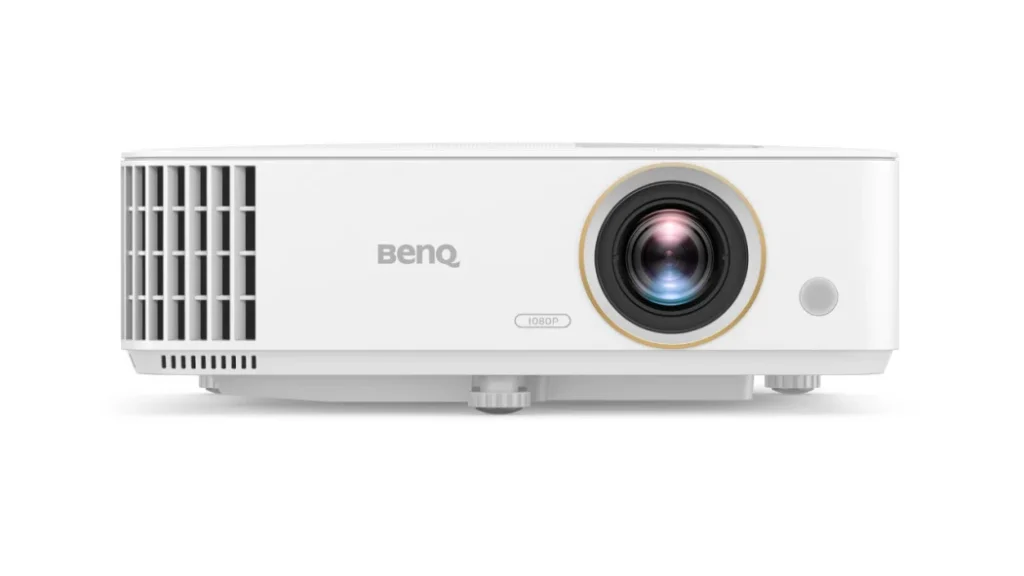
BENQ TH685P
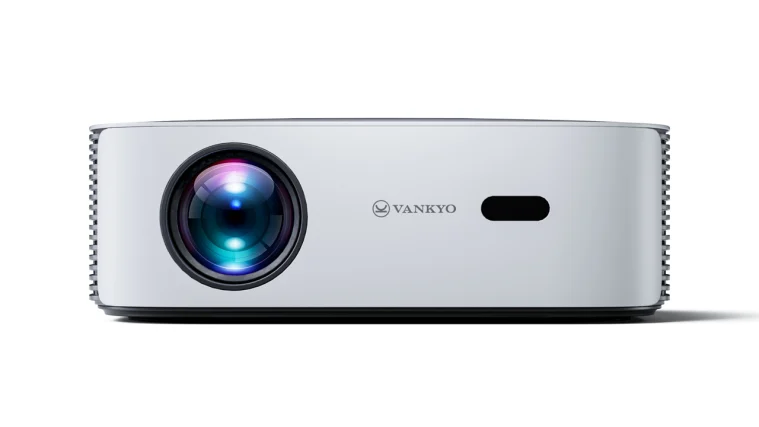
VANKYO PERFORMANCE V700W
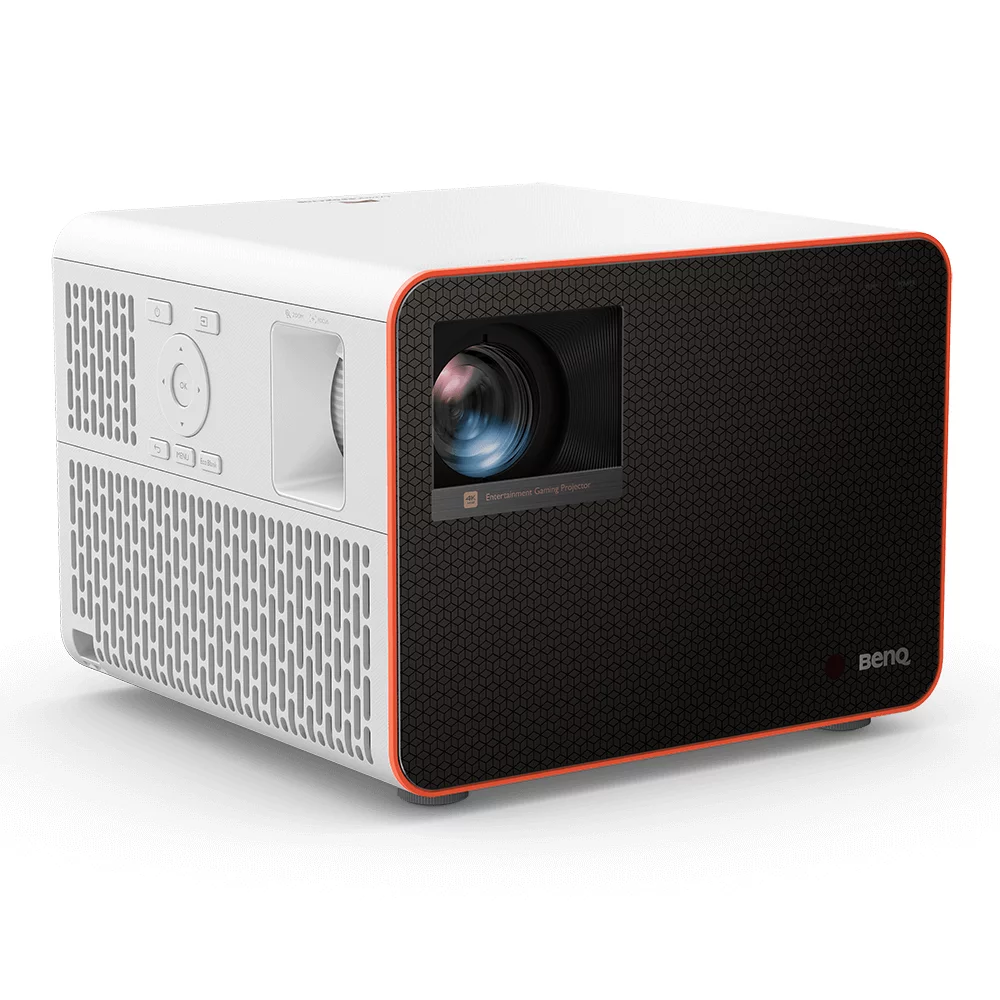
BENQ X3000I
1. EPSON PRO CINEMA LS12000 4K PRO-UHD – Best Home Theater Projector Overall

image credit buy : epson.com
Introducing the Epson Pro Cinema LS12000 4K PRO-UHD®1 3-Chip 3LCD Laser Projector.
Utilizing an all-new Laser Array Light Source, the Pro Cinema LS12000 is capable of displaying a 4K picture on screen up to an astonishing 2,700 lumens for both color and white brightness2. And, when driven by a proprietary Epson ZX Picture Processor for powerful picture processing, the Pro Cinema LS12000 produces incredible brightness, color accuracy, and image detail to faithfully display all your content the way it was meant to be seen.
Although the Epson Pro Cinema LS12000 is expensive, considering the image quality it produces, it’s almost a steal. Thanks to improved lens quality and video processing, Epson is well-known for their pixel-shifting LCD projectors, which produce images that are almost identical to actual 4K UHD pictures while utilizing only half as many pixels on screen. The LS12000 increases the pixel count to a full 3,840 by 2,160 pixels while maintaining the same emphasis on premium lenses and processing. More detail than we’ve ever seen with a pixel-shifting 4K DLP projector is the outcome.
Additionally, you won’t see rainbow artifacts, which are the flashes of red, green, and blue that single-chip projectors can produce. This is because the image is created by three LCD chips. Along with superior color accuracy, contrast, and shadow depth, the LS12000 also has advanced features including an easy-to-use lens adjustment function that keeps the image height constant when you transition between movies with different aspect ratios.
Severe videophiles who want to install the LS12000 in a darkened room with black walls, ceiling, and seats in order to reduce reflections back onto the screen will be enticed by its allure. Even less picky viewers will be able to see that the image quality is good enough, making it a good projector for home theater use for anyone. It’s also bright enough for use in a family room, especially if you want to watch movies periodically with the lights turned off completely. If you’re a fan of 3D movies, you’ll have to go elsewhere as it doesn’t support 3D.
Pros
- Delivers a full 3,840 by 2,160 pixels on screen
- 2,700-lumen laser light source rated to last the life of the projector
- Supports HDR10, HDR10+, and HLG HDR
- Good color accuracy, contrast, and shadow detail, plus dark blacks for a laser model
- Easy to maintain image height for different aspect ratios
Cons
- Expensive
- No 3D support
2. BENQ TK860I – Best 4K Home Entertainment Projector

image credit buy : benq.com
BenQ smart home projectors bring you all TV shows and movies up to 4K HDR on the big screen and even accept voice search commands. Best of all, these projectors are super easy to use, letting you watch, play, and do everything you love, only bigger and better. Dividing images into 1,000+ zones, Local Contrast Enhancer analyzes each segment’s brightness and adjusts gamma independently for greater dark and bright detail definition and enriched 4K image depth.
BenQ TK860i and other home entertainment projectors are made for ambient light environments, thus they are bright, even if it means sacrificing some image quality. As expected, the TK860i prioritizes brightness, but its image quality is still rather good. It boasts BenQ’s innovative HDR-PRO technology, which works for SDR, HDR10, and HLG HDR input to produce higher shadow depth, contrast, and feeling of three dimensions than most of the competition, in addition to 4K resolution (made possible by a DLP chip fitted with TI’s fast-switch pixel shifting). With a free Android TV 11 dongle, the projector can stream smart TV content and supports full HD 3D. Input delays, which we measured at somewhat longer than the state-of-the-art but short enough for all but the most severe gaming, will also be appreciated by gamers.
Anyone who demands excellent visual quality rather than just passable quality will be drawn to the TK860i, especially if they also desire a reduced input latency for games like first-person shooters or sports. If single-chip DLP projectors produce red, green, and blue flashes that are commonly referred to as rainbow artifacts, you should make sure the dealer you purchase the projector from offers easy returns in the event that there are issues. However, the TK860i is a great option if you don’t see these artifacts or don’t mind seeing them and you’re searching for a means to watch TV, play games, and watch movies with lights on.
Pros
- 4K resolution using TI’s XPR fast-switch pixel shifting
- Good shadow detail and contrast
- 1.3x zoom and modest vertical lens shift
Cons
- Initial physical setup is difficult
- Frequent rainbow artifacts in testing
3. BenQ TH685P – Best 1080p Home Entertainment Projector
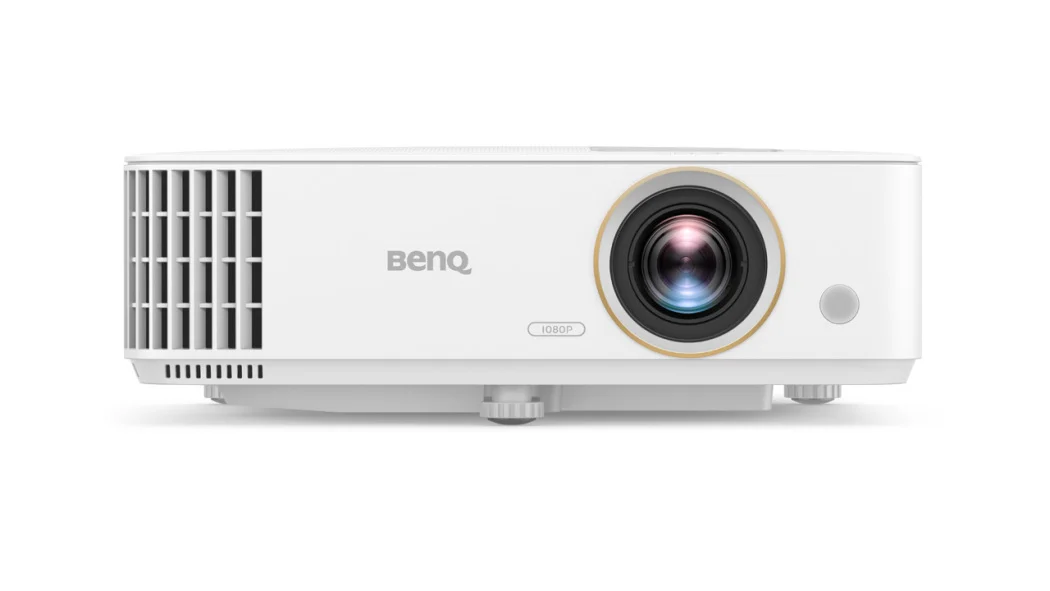
image credit buy : benq.com
the BenQ TH685P projector delivers intense real-time gaming experiences. Incredible action is delivered even during the day thanks to stunning 1080p HDR visuals and 3,500 lumens of ultra-brightness, and breathtaking music transports you to an epic gaming experience beyond anything you’ve ever experienced. With expertly calibrated Game Sound Mode, the TH685P’s integrated 5-watt speaker amplifies every sound in First Person Shooter. With the use of both physical and psychoacoustics, the TH685P produces clear, high-quality audio.
The TH685P’s specifications don’t convey the entire picture. While the specifications of this 1080p projector are nearly the same as those of its BenQ predecessor, the TH685P produces a noticeably better image when using HDR input. For a home entertainment projector at this budget, it is a huge thumbs up. We were also taken aback by the quality of the onboard audio. The built-in 5-watt chamber speaker produces loud enough music to fill a sizable family room and is highly useful.
For those who are not prone to rainbow distortions, this device is an excellent option because of its excellent handling and downconversion of 4K HDR video in addition to its low input latency. (Ideally, you should only watch HDR content in dimly lit spaces.) Also, this model’s speaker output is a benefit if you can’t watch or play with headphones or an external sound system attached.
Pros
- Bright 3,500 ANSI lumen rating
- Short input lag
- Accepts and downconverts 4K input to native 1080p resolution
- Good color accuracy, contrast, and shadow detail
Cons
- Can’t read files from USB memory
- Shows rainbow artifacts (red-green-blue flashes)
4. Vankyo Performance V700W – Best Budget Home Entertainment Projector

image credit buy : ivankyo.com
The movie projector can wirelessly mirror videos, photographs, and games from smartphones (iOS/Android) or other devices to the big screen more quickly because of its ultra-fast and stable 5G and 2.4G Dual-Band WiFi. Additionally, it includes a Bluetooth connection, allowing you to pair Bluetooth speakers, headsets, or earphones with it.
The Vankyo Performance V700W, which lists for some dollars and is usually offered for less, is a direct competitor with high-end versions despite being somewhat larger than other inexpensive small projectors. It offers comparable characteristics to competitors, such as a native resolution of 1080p (1,920 by 1,080-pixels) and an extremely watchable image that is assured to be free of rainbow distortions. With a 420 ANSI lumen rating, it’s also the brightest child on the block—at least for its class. In our tests, we used the optimal picture quality settings, and it lit up a 90-inch screen without any issues while the lights were off. At night, it produced a sufficiently bright image when we used an 80-inch screen in a family room.
In addition to having a high brightness, the V700W has somewhat superior image quality than other projectors in this price range, including more shadow detail. For a low-cost projector, even the integrated audio, which features two 5-watt speakers and Dolby Digital Plus, is remarkable. Furthermore, the input latency, which is 26 milliseconds for 1080p, 60Hz input, is more than quick enough for light gaming.
The V700W should be at the top of the list for anyone searching for an affordable entry-level projector for light-hearted home entertainment purposes. Even though its pricing is on the higher end of the cheap model range, it doesn’t cost much more than its competitors, who are mostly restricted to considerably lower image sizes in any given light condition. It is also reasonably priced, making it a good backup projector for sporadic usage. That way, you may use it to enjoy a movie in your backyard while keeping your more costly projector in its fixed location.
Pros
- Resolution of 1,920 by 1,080
- Guaranteed free of rainbow artifacts
- Surprisingly robust audio
- Input lag is easily short enough for casual gaming
Cons
- Big settings menu obscures image (and seeing the effect of your changes)
- Minor tweaking needed to bring out shadow details
5. BenQ X3000i – Best Gaming Projector

image credit buy : ivankyo.com
The movie projector can wirelessly mirror videos, photographs, and games from smartphones (iOS/Android) or other devices to the big screen more quickly because of its ultra-fast and stable 5G and 2.4G Dual-Band WiFi. Additionally, it includes a Bluetooth connection, allowing you to pair Bluetooth speakers, headsets, or earphones with it.
Our choice for the best 4K gaming projector is the BenQ X3000i, which is also our best choice for gaming in general. It is the flagship model in BenQ’s Immersive Gaming Series. It is not just a light cannon but also a pair of 5-watt stereo speakers that can provide high-quality sound in a big family room, all owing to its 3,000-ANSI-lumen LED light source. The three preset Game mode variations—first-person shooter, role-playing, and sports games—each modify the visual and audio for the corresponding game genre. Other notable features include compatibility for both HDR10 and HLG HDR. Additionally crucial is the cutting-edge minimal input latency. For 4K/60Hz, we observed it at 16.7 milliseconds (ms), which is about the same for 1080p/60Hz, and at 16.7 milliseconds (ms) for 4K/60Hz, essentially the same for 1080p/60Hz, and at 8.7ms for 1080p/120Hz—all of which are consistent with the rated 4.2ms at 240Hz.
It is obvious that the X3000i is intended for hardcore gamers. It may also be used for watching movies and videos, and to make that process easier, an Android TV 10.0 streaming stick is included. BenQ does, however, state that the footage is adjusted to best showcase HDR on gaming consoles rather than, say, Blu-ray players. Observe that one of its convenient features is a dedicated button on the remote that allows you to quickly switch between the three gaming modes. Purchasing the X3000i without any serious gaming plans in mind would be like purchasing a private jet without any intention of taking it airborne.
Pros
- 4K (3,840 by 2,160) resolution
- Bright LED light source (rated 3,000 ANSI lumens)
- Very short input lag
- Includes Android TV 10 dongle, controlled by projector remote
- Three paired video and audio modes for three categories of gaming
Cons
- Wi-Fi is sole network connection option
- Prone to rainbow artifacts
- Some tricky assembly may be required
Buying Guide: The Best Projectors for 2024
If you’ve read through our selection criteria for each model above, you’ve undoubtedly noticed that they vary based on a variety of factors, such as your budget, the purpose for which you intend to use the projector, and even purely subjective considerations like whether or not you find rainbow artifacts annoying. All of these factors should be considered before making any purchases, but deciding what type of photographs you want to examine is a good place to start.
pictures may be divided into two categories: data, which includes text and graphics, and photorealistic, which includes pictures from cinema, video, and photography. Both are typically present in some degree in games. Of course, any projector can display any type of image, but certain projectors do better with certain types of images than others. It is preferable to have a projector that is optimized for every type of picture you anticipate viewing, but at the absolute least, for the ones you want to view most frequently.
Depending on its intended audience, data projectors are sometimes referred to as business or education projectors. They are made to display spreadsheets, PDF files, presentations, business graphics, and line drawings. They project a picture on a big screen that is sufficiently bright to withstand ambient light, making them ideal for use in conference rooms and schools. Many are adept at producing lifelike graphics that are suitable for projecting brief video snippets during a lecture or even for seeing a movie in class. However, if you want anything close to the quality you get from a movie theater or a TV, they are rarely suitable options for full-length films. They frequently prioritize brightness above contrast and color fidelity, even though brightness is more crucial for withstanding ambient light.
Projectors for gaming, home theater, and entertainment are so close to one another that a single device is sometimes sold in two or three categories. These projectors for home use concentrate on contrast and color accuracy, and typically come with additional settings to adjust color, minimize noise, sharpen pictures, and perform other digital effects on film and video.
The majority of models designated as home theater projectors are made with conventional home theater viewing in a dimly lit space in mind. Compared to home entertainment projectors, they often provide superior contrast, lower brightness, and more accurate color. The majority don’t have speakers. It’s assumed that any projector that fits inside its casing won’t be able to compete with the external audio system you install in your home theater.
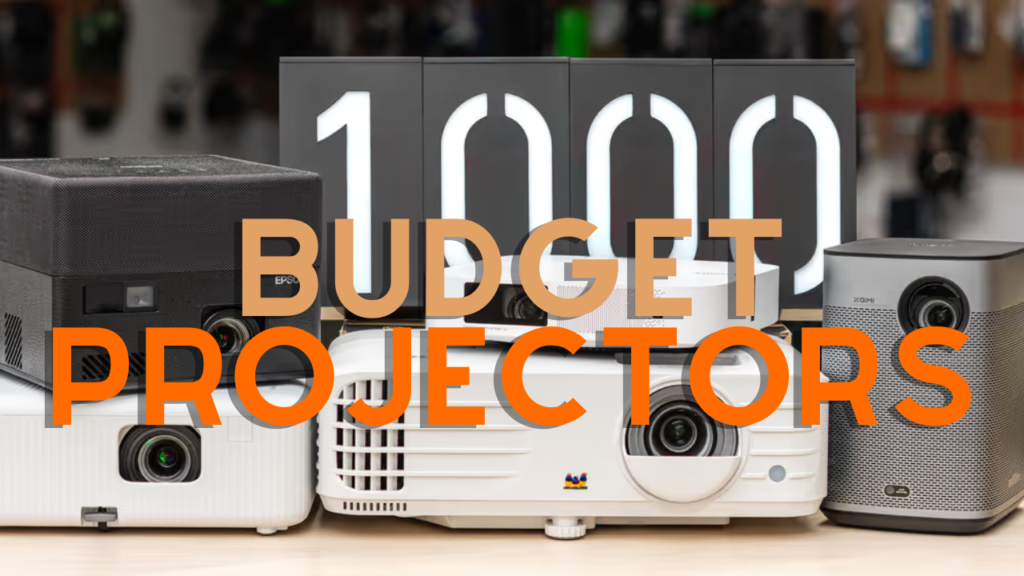
Do You Need a Portable Projector?
Take into account how portable the projector must be. Projectors come in a variety of sizes and weights, from tiny and light enough to fit in a shirt pocket to big and heavy enough to be limited to permanent installations (typically mounted).
Make sure to choose a portable projector that is the right size and weight if you plan to use it for presentations at business meetings, for home entertainment or gaming, or to set it up in your garden for a movie night with friends. Make sure the projector’s battery life is sufficient if you won’t be near any power outlets.
What Resolution Is Enough in a Projector?
Although projectors may scale pictures up or down, it’s normally advisable to avoid doing so as it may cause distortion. You will typically get the best image quality for any projector resolution up to and including WUXGA (1,920 by 1,200 pixels) if you match the native resolution of the projector—that is, the number of physical pixels in the display—with the source—that is, the computer, video equipment, or game console—that you plan to attach it to the most.
The criterion is slightly different for projectors with 4K ultra-high quality (3,840 by 2,160 pixels). Most applications still find current projectors, which are based on 3,840 by 2,160 pixel image processors, to be too costly. The less expensive option makes use of a method known as pixel shifting. It creates several sets of pixels for every frame in the video stream, moves the positions of each set, and uses a native 1,920 by 1,080-pixel chip. As a result, the screen has more pixels each frame than the processor does. The amount of pixels is doubled in two sets and quadrupled in four sets, totaling 3,840 by 2,160. When executed correctly, only doubling the pixel count can provide visuals that, at least when viewed from typical viewing distances, are identical to quadrupling them the screen.

It’s manageable even for 1080p projectors that support 4K UHD input. Reducing the image resolution to a lower resolution will only result in a little loss of focus because the greater resolution contains precisely four times as many pixels as 1080p. The benefit of HDR for enhancing image quality, even at 1080p resolution, can be yours if the projector also supports HLG HDR (also supported by some streaming services) or HDR10 (the high dynamic range, or HDR, version found on discs and on some streaming services, including Netflix).
The degree of detail in the photographs should be taken into account if you intend to display data images. A projector with an SVGA resolution (800 by 600 pixels) will cost far less than one with a higher native resolution, thus it could be sufficient for a standard PowerPoint presentation. However, 4K UHD is the best option for very detailed photos.
If you have a 4K UHD Blu-ray player, a 4K-capable streaming device, or another 4K UHD media source, 4K UHD is usually the best option for video. But chances are, especially if you have a collection of 1080p DVDs, you’ll be watching a lot of content at 1080p for the foreseeable future. You could even occasionally be watching at even lower resolutions. Thus, see how effectively the projector manages an increase in 1080p input scaling.
Is a 4K projector worth it?
A 4K projector is recommended if you view a lot of 4K material and want the sharpest possible image. A projector’s bigger screen makes the resolution jump from 1080p to 4K more noticeable than it is on most TVs. Nevertheless, native 4K projectors are quite costly and typically only afforded by the most dedicated enthusiasts of home cinema. The majority of reasonably priced “4K” projectors generate a 4K image using pixel-shifting technology, which may be quite effective and is more than sufficient for most users. Moreover, your eyes might not be able to distinguish between 4K and 1080p if you sit farther away. And most 4K projectors support high dynamic range video, but we think this feature is less important on projectors, since none of them are bright enough to do HDR properly.

